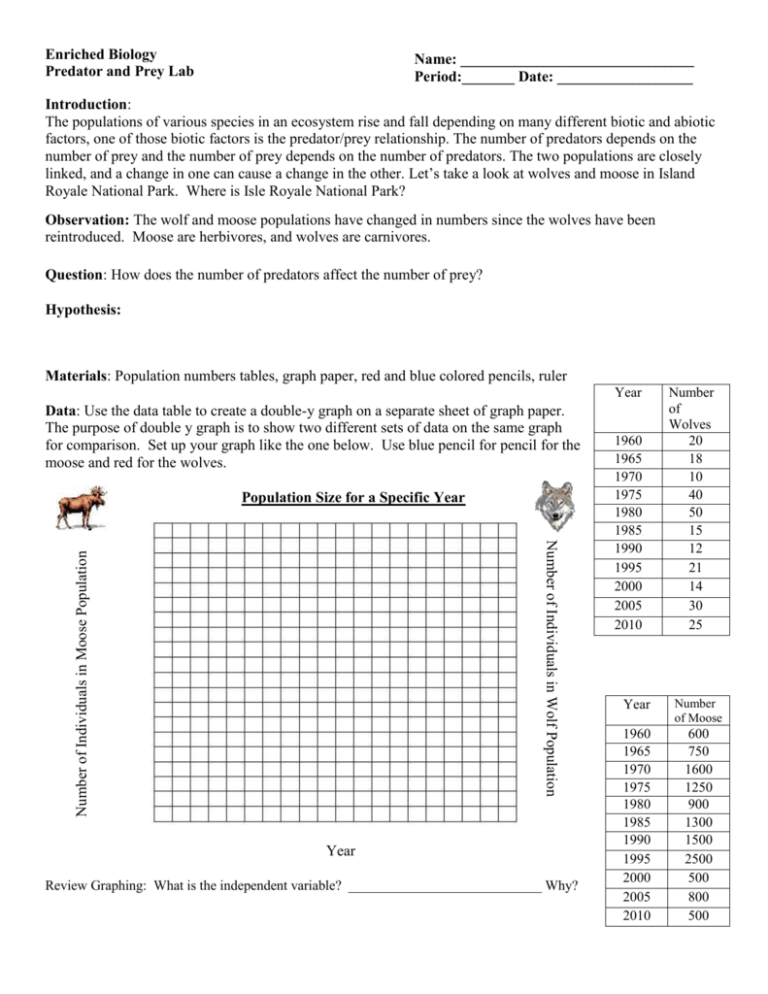Predator and Prey Lab
advertisement

Enriched Biology Predator and Prey Lab Name: _______________________________ Period:_______ Date: __________________ Introduction: The populations of various species in an ecosystem rise and fall depending on many different biotic and abiotic factors, one of those biotic factors is the predator/prey relationship. The number of predators depends on the number of prey and the number of prey depends on the number of predators. The two populations are closely linked, and a change in one can cause a change in the other. Let’s take a look at wolves and moose in Island Royale National Park. Where is Isle Royale National Park? Observation: The wolf and moose populations have changed in numbers since the wolves have been reintroduced. Moose are herbivores, and wolves are carnivores. Question: How does the number of predators affect the number of prey? Hypothesis: Materials: Population numbers tables, graph paper, red and blue colored pencils, ruler Year Data: Use the data table to create a double-y graph on a separate sheet of graph paper. The purpose of double y graph is to show two different sets of data on the same graph for comparison. Set up your graph like the one below. Use blue pencil for pencil for the moose and red for the wolves. Population Size for a Specific Year Number of Individuals in Moose Population Number of Individuals in Wolf Population Year Review Graphing: What is the independent variable? ____________________________ Why? 1960 1965 1970 1975 1980 1985 1990 1995 2000 2005 2010 Number of Wolves 20 18 10 40 50 15 12 21 14 30 25 Year Number of Moose 1960 1965 1970 1975 1980 1985 1990 1995 2000 2005 2010 600 750 1600 1250 900 1300 1500 2500 500 800 500 Analysis: Answer all questions in the lab section of the binder. 1. What is happening to the moose and wolf population from 1960 to 1970? 2. Look at the moose and wolf population points for 1970, 1975, and 1980. What do you notice about these points? Describe your observation. Explain your observation. 3. Look at your graph again, how are the wolf and moose populations related to each other from 1960-1990? Explain the cause and effect of the population changes your graph is showing 4. Compare the moose and wolf populations in 1995. Describe what is happening from 1995-2000. Why do you think this occurred? 5. How does the size of the moose population affect the wolf population? 6. How does the size of the wolf population affect the moose population? 7. What would be the short term impact on the wolf population if in1985, there were 200 more moose births than normal, bringing the moose population to 1,500 instead of 1,300? 8. What would the result be if another predator such as a lynx were added to the community? 9. Define predator and define prey. 10. Research three (2) other examples of predator-prey relationships. In your examples, would there be a greater number of predators or prey in a balanced community? Why?











